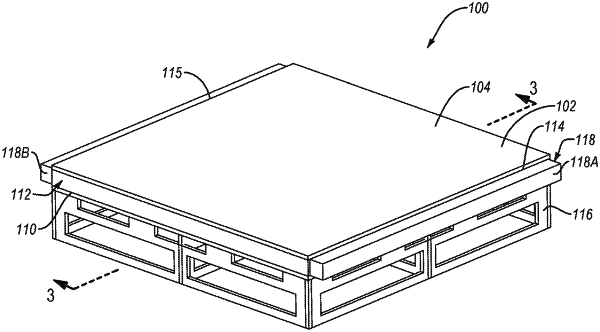| CPC B29C 33/02 (2013.01) [B29C 33/04 (2013.01)] | 20 Claims |

|
1. A tool for forming a composite part, the tool comprising:
a first layer, comprising a part-interface surface and a core-interface surface, the part-interface surface being opposite the core-interface surface;
a heating element, coupled to the first layer, the heating element being configured to supply heat to the first layer;
a second layer, spaced apart from the first layer; and
a low-density core, interposed between the first layer and the second layer such that the core-interface surface and the second layer interface with the low-density core, the low-density core having a density less than the first layer and the second layer, wherein the low-density core comprises a plurality of corrugated sidewalls each having a plurality of corrugations;
wherein:
each one of the plurality of corrugated sidewalls extends continuously from respective first ends of the first layer and the second layer, across an entire width or an entire length of the first layer and the second layer, to respective second ends of the first layer and the second layer, which are opposite the first ends of the first layer and the second layer, respectively;
the first layer, the second layer, and adjacent ones of the plurality of corrugated sidewalls at least partially define each one of a plurality of channels;
each one of the plurality of corrugated sidewalls directly contacts the first layer and the second layer;
each one of the plurality of corrugated sidewalls is perpendicular to the first layer and the second layer;
each one of the plurality of channels extends across one of the entire width or the entire length of the first layer and the second layer; and
the plurality of channels occupies an entirety of space between the first layer and the second layer, and fluid is flowable through the plurality of channels such that the fluid occupies the entirety of the space between the first layer and the second layer.
|